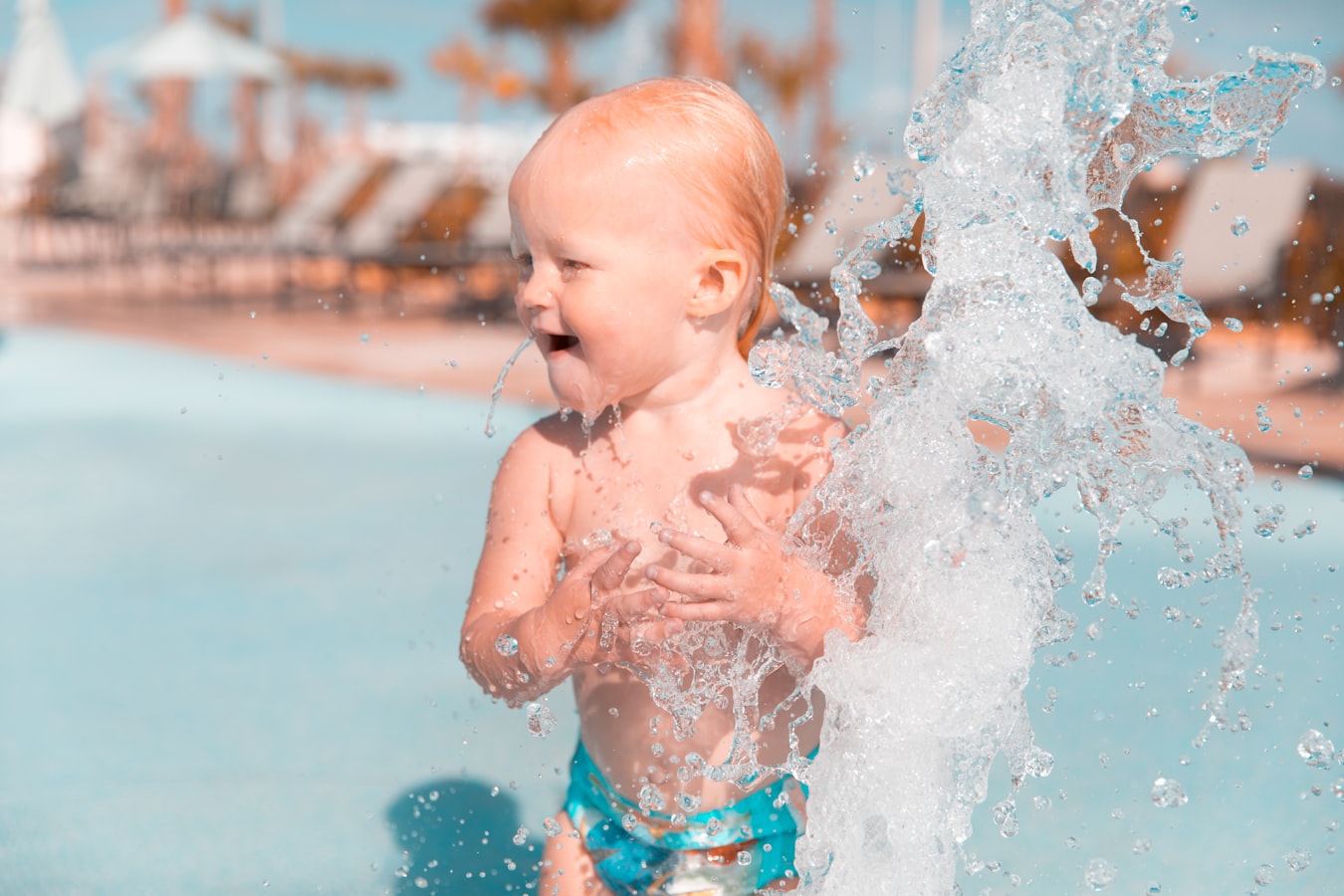
As a swim instructor, I get this question a lot. “When should I start teaching my child how to swim?” My best answer: Yesterday. If they are old enough to crawl then they are old enough to get in the water. I have taught lessons for babies as young as six months. Now many people are surprised to hear that there are baby swim lessons. What could you possible do with an infant in the water?
Getting Baby Comfortable in the Water
The focus of the lessons at this age is just getting them comfortable in the water. This way we avoid the crying and confusion that occurs when they start learning how to do strokes later. It’s very easy to get the baby comfortable in a swimming pool. Hold them closely just like you were holding them in your living room on the couch, sway back and forth if they become cranky and use the same soothing techniques that work at home to soothe them . It’s important to remember they will pick up on your stress if you are anxious! Make sure you are relaxed when getting them ready to swim and stay calm as you hold them. Splash some water on their arms and head and sing to them (I personally always sing “Row Your Boat” - it fits the theme!).
Baby Swim Skills
The Kick: One of the biggest lessons I teach infants is how to kick. Hold the baby’s legs and kick them up and down while saying “kick, kick, kick” so that they start to associate the words with the action. This helps them as they progress and start kicking independently. Ideally you want to ask them to kick and they automatically starting moving those little legs at full speed! Move around the pool as you do so they get used to moving through the water vertically as they kick. Start by doing this with their face above the water (one step at a time!).
Monkey Cheeks: Depending on how old your baby is you should ask them to do “monkey cheeks”. Have them puff their cheeks out with air and with their mouth closed. When doing this they are holding their breath and it will help set them up when you start putting them under. Some children are great with keeping their mouths closed in the pool while others automatically start sucking in water. I’ve noticed boys are more likely to swallow pool water than girls (just my personal observation). If they start swallowing a lot of water take a break and return to it another day. Give them some juice after the lesson to help settle their stomachs. The last thing you want for your baby after a fantastic swim lesson is an upset stomach!
Have Fun
Lastly and most important, have a blast! This is your baby! YOU are teaching them how to swim! I love watching this as a swim instructor because it really bonds the baby to the parent as they progress. It’s memories in the making and one of the best rewards is seeing a mother smile the first time her baby voluntarily kicks on his own or puts his face under.
So this summer put on a bathing suit and get in the water with your little one and a Sunsational Swim Instructor!Have fun, learn a new skill and create excellent memories with your baby as they learn to swim.
About the Author: Danielle Barton
Danielle has been teaching swim lessons for the past 8 years. She loves working with children and has her Masters in child psychology, which she often uses when teaching children how to swim. She has completed four triathlons and swims competitively during the summer months. She enjoys being outdoors with her friends and family, and loves teaching others how to swim!
ABOUT SUNSATIONAL SWIM SCHOOL
Sunsational Swim School is the 🥇 #1 rated provider of private, at-home swimming lessons in America. We have specialized swim instructors for students ages 6 months to adult, beginner to advanced. Featured on ABC, CBS, Impact 100, The List and others, Sunsational instructors have a minimum of 2 years of teaching experience, are CPR certified and insured, and have collectively taught over 302,223 lessons for more than 74,415 students nationwide!

